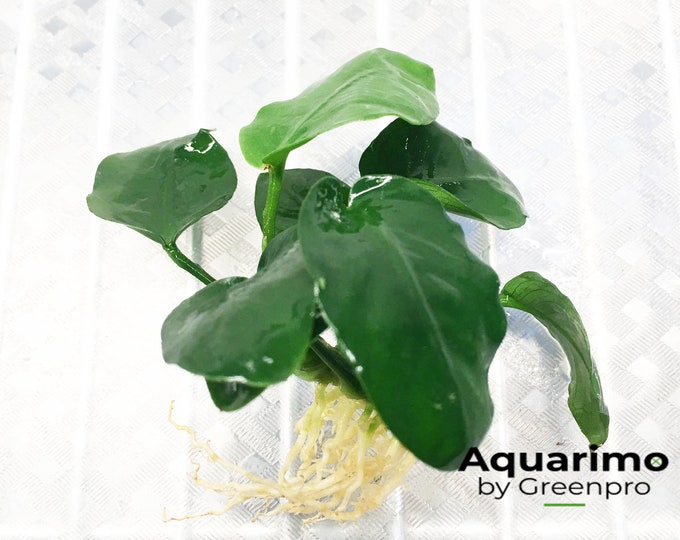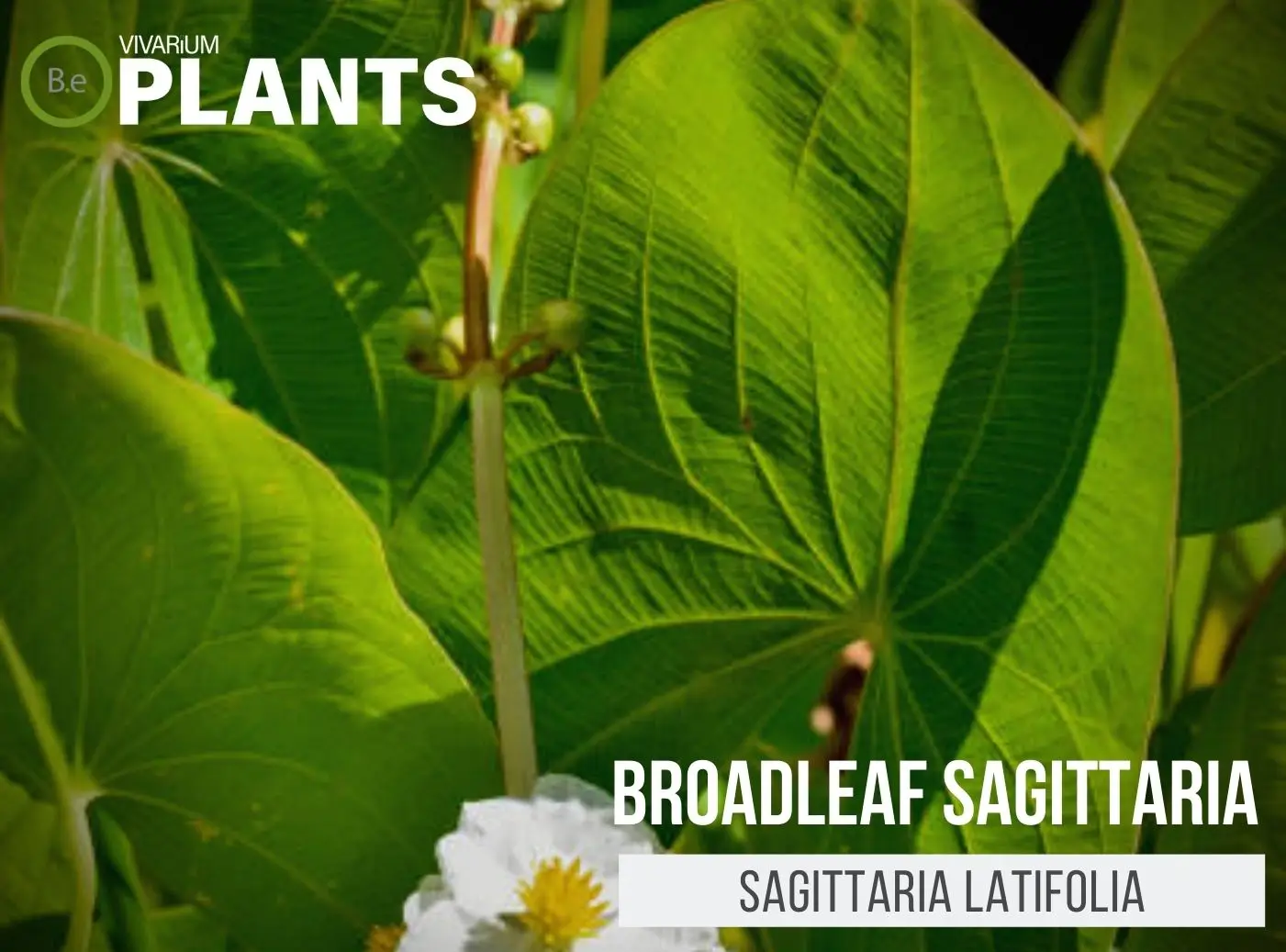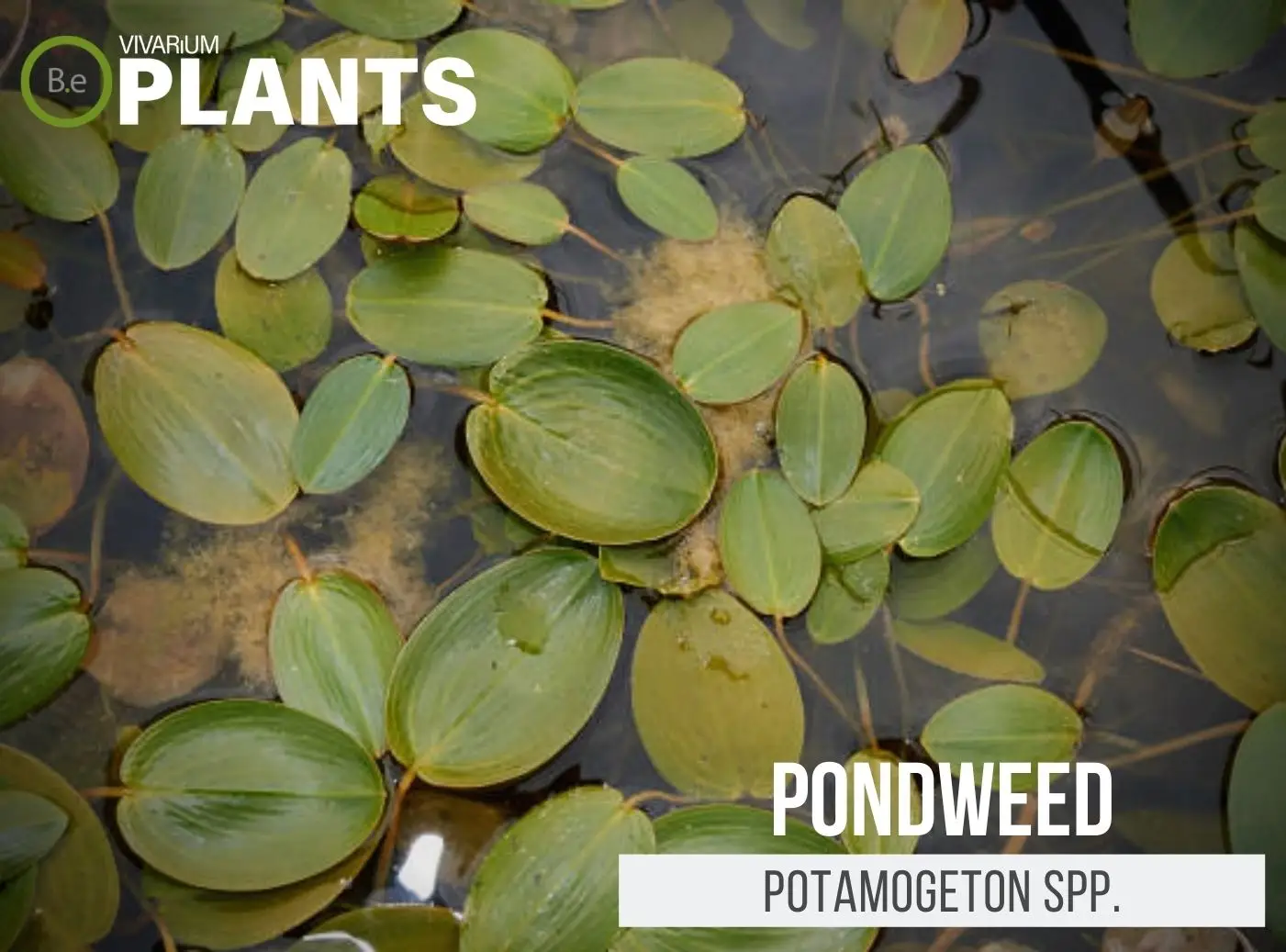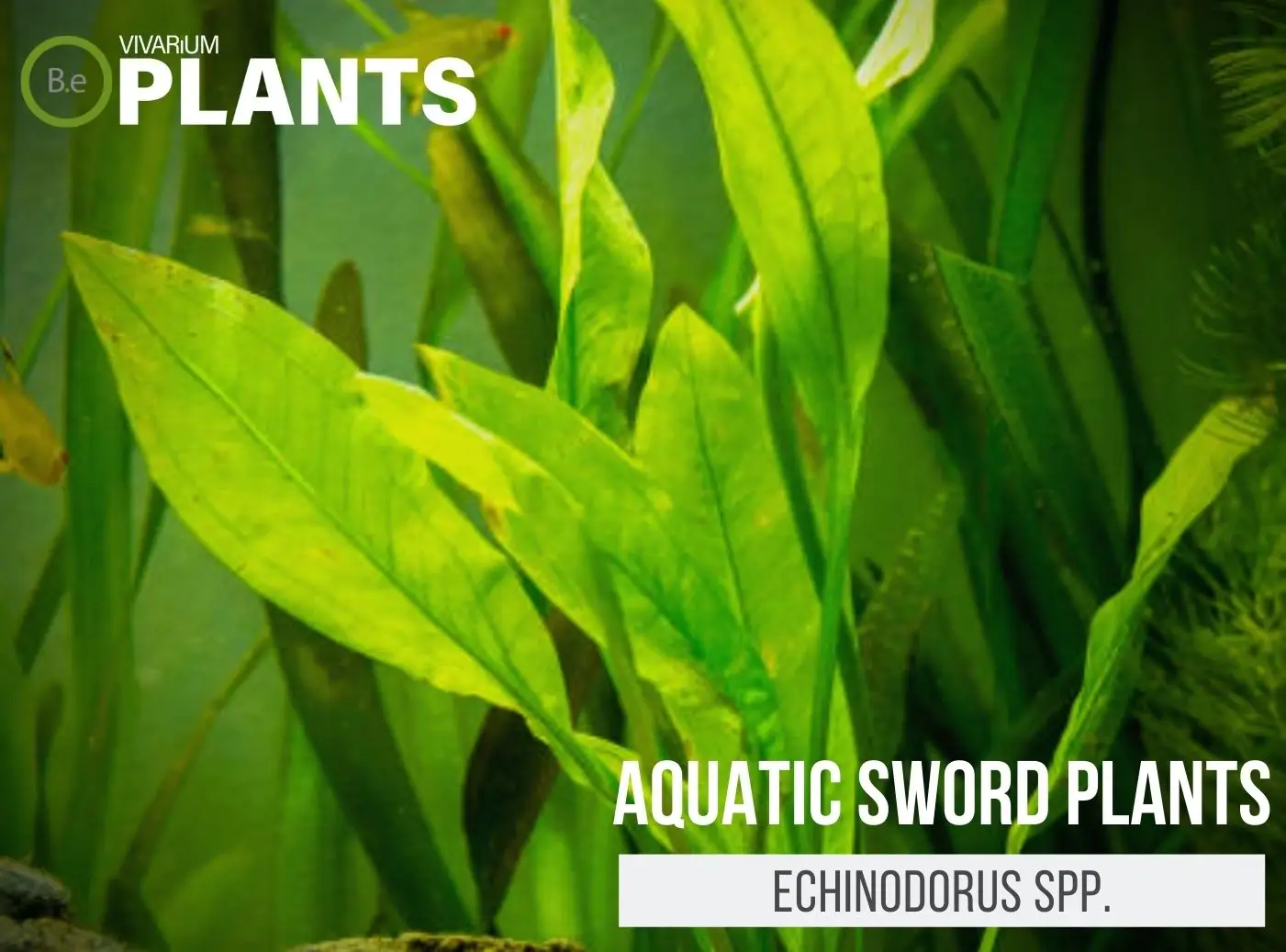Anubias spp. is a genus of large and small tropical aquatic plants that are some of the most popular marginal plants in the aquascaping hobby.
Anubias plants are known for their hardy nature and low-maintenance requirements.
These plants are tolerant of a wide range of water conditions making them an ideal choice for beginners and aquascaping veterans alike.
With a little bit of research and skill, Anubias spp. can be used to make a captivating aquascape that’s good for the environment and a joy to behold.
| Quick Stats: | |
|---|---|
| Scientific Name | Anubias spp. |
| Common Name | Anubias |
| Family Name | Araceae |
| Habitat | tropical rivers, ponds, and lake beds |
| Temperature | 70-85°F |
| Height | 6-14 inches |
| pH | 5.5-7.5 |
| Lighting | Medium to bright |
What Are Anubias?
Anubias spp. is a genus of tropical aquatic plants native to Africa, Asia, and Australia.
Its species may be found in marshy areas, on riverbanks, and in ponds, often rooted in soils, stones, and other plants.
Anubias plants are true aquatic plants and are usually kept underwater in aquascapes to ensure proper growth and health.


Anubias Facts
Anubias spp. is known for its hardy nature and low-maintenance requirements.
These plants can cope with low light conditions, relatively high levels of nitrates, and wide swings in water temperature, making them an ideal choice for the beginner aquascape.
Anubias are a great choice for aquascapes as they provide an attractive natural backdrop, with contrast to colorful fish and other aquatic plants.
Description
Anubia plants come in many sizes and shapes. Plants can range from small varieties that are barely visible to taller varieties that can grow up to 14 inches in height.
Their leaves are usually clustered and pinnate, appearing much like a feather or a fern.
The leaves range in shape from thin and oval to wider and more spear-like. Anubia plants also produce delicate, white flowers, often with purple or yellow pistils.
Habitat
Anubias spp. plants are native to warmer climates and can be found submerged in tropical rivers, ponds, and lake beds.
They prefer a temperature of around 75-85°F (24-30°C). In the wild, Anubia plants are often found in marshy areas, on riverbanks, and in ponds, often rooted in soils, stones, and other plants.
pH Preference
Anubias spp. plants prefer a pH between 5.5-7.5, with a slightly acidic bias.
Lower pH levels can reduce plant growth and in extreme cases, cause the yellowing of the leaves.
Anubia plants can, however, survive in harder alkaline waters, so long as the pH remains within the acceptable range.
Vivarium Type
Anubias are quite an easy-going species. With that in mind, it will not be too complicated when it comes to choosing the type of enclosure it is grown in. It is best to try and replicate the plant’s natural habitat as much as possible.
Doing so will make it easier to provide this foliage plant with its basic needs. The proper setup and theme of the enclosure will make a big difference to the overall look and health of the plant. Be sure to choose setups that are moist and high in humidity.
Here are recommended vivariums it will do well in:
- Paludariums – Half aquatic/ half terrain-based enclosure.
- Ripariums – Mostly aquatic-based enclosures with some terrain features present.
- Aquarium– Fully aquatic-based enclosure with little to no dry terrain.
Vivarium Placement
Anubia plants should be placed in the foreground of the aquarium, as low as possible.
These plants are slow-growing and look best when left undisturbed, so avoid burying their rhizome.
Anubias can be wood or rock-attached, so that they can be firmly positioned and difficult to move.
Substrate
Anubia plants do not require any special substrate. However, a nutrient-rich aquatic substrate can provide additional mineral nutrition.
They may also be planted directly in soil or in a semisubmerged pot. Make sure the soil is at the same pH level when repotting your Anubias.
Lighting
Anubia plants prefer low to moderate aquatic light levels. Low-tech planted aquariums are well-suited for the Anubias spp. as they can easily tolerate dimly lit conditions. Anubias do not require any special lighting to be successful.
Buy an Anubia
When it comes to buying Anubias, there are a few things to keep in mind. Making sure the plant is healthy when purchased is essential for its success in a vivarium or pond. Vegetation that is already in poor conditions will have a very hard time adjusting to new environments.
Click the image below to find out more about the current price and other relative info about this plant.
Anubias Care & Propagation
When caring for Anubias spp. plants, maintenance should be kept minimal to ensure the plants thrive in their new environment.
To propagate Anubia plants, simply separate the rhizomes into sections with two or three leaves and replant the separated rhizomes.
How To Grow
Anubias spp. plants prefer nutrient-rich water and soil, and therefore require regular fertilization to maintain their health and growth.
They should be fertilized lightly with a liquid fertilizer designed for aquatic plants, or with a small layer of powdered fertilizer. Anubias also prefer cooler water (60-75°F/15-24°C) for best growth.
Water Requirements
Anubias spp. is an aquatic plant that is quite tolerant of various water conditions, but prefers relatively still water with a temperature range of 68–82°F and a pH between 6–7.5. Anubias spp. also benefits from occasional fertilization, but it is not required and should be done sparingly.
Plants Similar To Anubias
Adding diversity to an enclosure is key to an aesthetically pleasing setup. Try mixing up the look of your vivarium with different flora that can easily co-exist in the same types of environment.
Furthermore, if for some reason you find Anubias hard to acquire or would like to consider something similar to this aquarium plant… Here are other marginal plants you might find will do well with or in place of Anubias spp.:
Conclusion
Anubia plants are a great choice for any aquascape due to their hardy nature and easy maintenance requirements.
Although these plants do require some specific care, with a little research and skill, you can successfully create a captivating and low-maintenance aquascape that will benefit both you and the environment.
Frequently Asked Questions
No, Anubias does not need to be fully submerged – it is a semi–aquatic plant and can tolerate short periods of immersion. It is best to keep the roots and rhizome attached to rocks or driftwood as opposed to planting it on an aquarium substrate.
Yes, anubias plants are very capable of attaching themselves to driftwood. Anubias plants are often attached to driftwood and rocks in aquariums in order to create natural–looking backgrounds. Most Anubias plants produce roots that easily adhere to surfaces such as driftwood and rocks, allowing them to anchor and grow in place.
Yes, Anubias is a good choice for aquarium plants as they are slow–growing, hardy, and easy to maintain. Additionally, Anubias can help improve water quality and provide hiding spots for aquarium dwellers.
Yes, Anubias is a very easy plant to grow. It is a low–maintenance plant that can be grown in almost any kind of aquarium environment. It does not need any special fertilizers or lighting, and it can thrive in low–light or high–light tanks. Anubias can also handle a wide range of water parameters, making them perfect for a variety of aquarists.
Anubias can be planted directly in the substrate or attached to wood or stone in the tank. It generally does best when secured to a hard surface, as it does not require being buried in the substrate. Generally, Anubias prefers gently lit, shady areas in the aquarium.
Yes, you can bury Anubias in gravel. However, it is important to ensure the roots are not completely buried in the gravel. Anubias should be buried so that the roots are only partially covered. Additionally, a layer of gravel should be spread around the base of the Anubias to ensure proper drainage and protection of the roots.
Ensure Anubias has a nutrient–rich substrate, maintains a consistent temperature, provides bright but indirect light, and keeps the plant in a humid environment to encourage growth.
Yes, you can plant Anubias in rocks. Anubias plants can be attached to rocks, driftwood, and other surfaces in an aquarium with a cotton thread or fishing line and will grow both above and below the water‘s surface. They are a great choice for beginning aquarists as they are hardy and relatively easy to care for.
Anubias rot can be caused by inadequate water quality, including high levels of nitrogen or phosphorus, high levels of carbon dioxide, inadequate lighting, or excessive heat.




